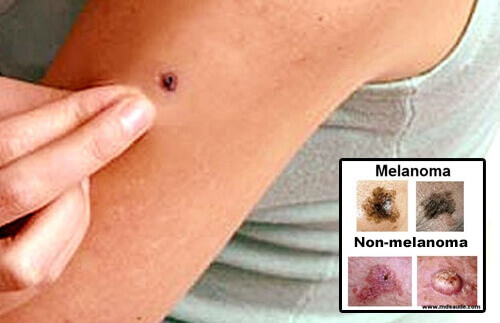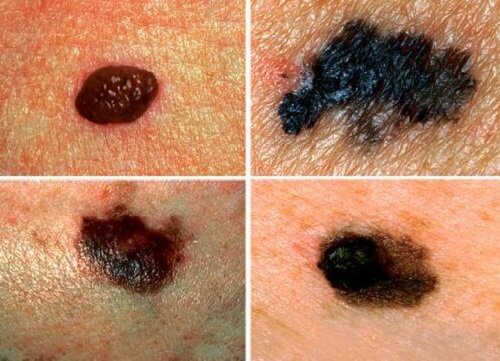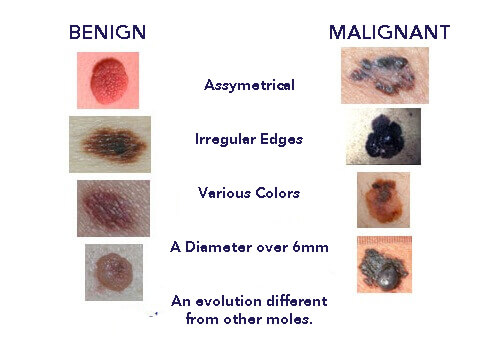Skin Cancer: Warning Signs, Causes And Symptoms

Skin cancer has become one of the greatest threats in the modern world. So, we should be careful with skin cancer warning signs as prevention.
Pollution, exposure to ultraviolet rays, and even nutrition are risk factors that can cause the growth of cancerous cells in the skin.
The most common type of skin cancer is considered non-melanoma, because this group of cancerous tumors includes all types of skin cancers, except malignant melanoma, which originates in the melanocytes of the skin.
Read also: Does eating fruits and vegetables prevent cancer?
Causes of Skin Cancer
- One of the main causes of skin cancer is frequent exposure to the ultraviolet radiation found in sunlight. Those who are exposed to strong sunlight for long periods of time are at a greater risk of developing skin cancer. The level of risk depends on the intensity of the sunlight, time of exposure, and whether the skin was protected.
- The use of sunlamps or tanning beds is another risk factor that can lead to skin cancer. Tanning beds are a source of ultraviolet radiation, which can cause non-melanoma skin cancer.
- Contact or exposure to toxic chemical elements like arsenic, industrial tar, coal, paraffin and certain types of oils.
- Radiation from radiation therapy.
- Injuries or serious skin inflammation, such as severe burns, skin overlying a bone infection and/or skin damaged by inflammatory diseases.
- Genetic risk factors.
Skin Cancer Warning Signs

Among the most important warning signs is the appearance of a mass, a bump or blemish that continues to grow over a period of time that can last months or even years.
An ulcer that doesn’t heal within three months can also mean skin cancer.
Basocellular carcinoma is a type of slow-growing cancer that can be noted by the appearance of red, scaly, flat areas on the skin.
It can also appear as small, waxy areas that easily bleed. It also manifests as dark blue, brown, or black areas as well as irregular blood vessels visible under the skin.
Squamous-cell carcinoma accounts for 20% of all skin cancers and develops in the upper layers of the epidermis.
It’s detected by the appearance of growths that usually have a rough surface but may also develop as a flat reddened area that slowly increases in size.
This type of cancer is often found on areas of the face and the back of the hands.
Kaposi sarcoma starts in the dermis, but can also start in the internal organs.
It often begins looking like a bruise but develops into a tumor.
See also: How is Ovarian Cancer Detected?
Signs and Symptoms of Melanoma

Another warning sign is a mole that has a different appearance than others on the skin. In any case, it’s always best to consult with your doctor as soon as possible.
Another simple way to detect melanoma is by following the ABCDE rule:
- Asymmetry: one half of the mole doesn’t match the other.
- Border: poorly defined, uneven, or abnormal edges.
- Color: Uneven color, including shades of brown or black. Marks can also appear, red, blue, white or pink.
- Diameter: for diameter: diameter greater than ¼” (6mm).
- Evolving: change in size, shape or color.
Did you know about these skin cancer warning signs?
All cited sources were thoroughly reviewed by our team to ensure their quality, reliability, currency, and validity. The bibliography of this article was considered reliable and of academic or scientific accuracy.
Schadendorf, D., van Akkooi, A. C. J., Berking, C., Griewank, K. G., Gutzmer, R., Hauschild, A., … Ugurel, S. (2018). Melanoma. The Lancet. https://doi.org/10.1016/S0140-6736(18)31559-9
This text is provided for informational purposes only and does not replace consultation with a professional. If in doubt, consult your specialist.








